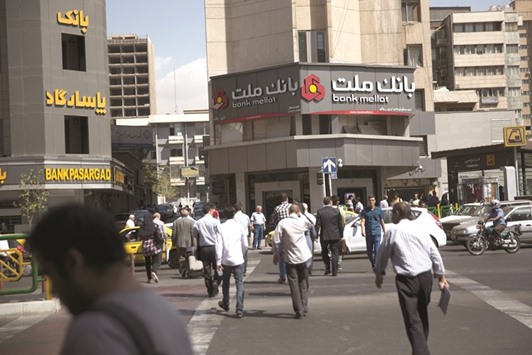Iran’s government plans to shift part of its borrowing from local corporate investors to the capital markets, a move that could stimulate trading in debt securities and help the economy recover from years of economic sanctions.
The sanctions, imposed over Iran’s disputed nuclear programme, hurt the government’s finances and prompted it to borrow heavily from local firms and debt-laden banks, many of which are linked to the state through shareholdings and managerial influence.
In the wake of the lifting of sanctions in January, the government is laying plans to offer a range of debt instruments in the markets, where they could be bought by institutional and individual investors, rather than placing debt directly with banks and Corps.
At present, Iran’s banking sector provides around 95% of all financing, with only a tiny portion sourced from the debt capital markets, said Navid Kalhor, equity research analyst at Agah Group, a Tehran-based investment firm.
“The banking sector is out of money and out of capital, so the government is looking to reduce its reliance on the sector. It now needs to seek the capital markets.”
Several efforts are under way: the Securities and Exchange Organisation (SEO) has approved the use by the government of lease-based Islamic bonds, known as ijara sukuk, which can be underpinned by creditor assets to help settle state debts owed to local firms.
“This is aimed at diversification of available instruments for the government and introduction of new tools for investors,” said Majid Pireh, senior expert in Islamic finance at the SEO’s research department.
A draft budget being discussed by parliament calls for issuance of 150tn rials ($4.4bn at the free market exchange rate) of ijara sukuk, part of a proposed 275tn rials of debt issuance for the financial year which started in March.
The draft budget also includes issuance of 75tn rials of Islamic treasury bills and 50tn rials of musharaka sukuk, a form of investment partnership which until now has been the main sukuk structure used in Iran.
The treasury bills and ijara sukuk could spur activity in Iran’s dormant debt markets because they will be tradeable in the country’s over-the-counter securities market, known as Fara Bourse.
“You will be hearing a lot more of these issuances, especially the ijara sukuk type,” said Payam Afzali, vice-president at Kardan Investment Bank, which is advising several local companies on their sukuk issuance plans.
“The mechanism is that the papers are issued and the ownership is transferred to the creditors - the secondary market is simultaneously created.”
The government is barred by law from transferring sovereign assets to the private sector, a common practice in sukuk issues by governments elsewhere in the world.
One way around this is to use private sector creditors’ assets to underpin sovereign sukuk; the creditors accept this arrangement because the government guarantees it will pay the principal and returns on the instruments.
The government is also exploring additional debt tools. The SEO is working with the government to introduce a new format known as manfa’a, or usufruct sukuk, which is based on the rights or future benefits of an asset, said Pireh.
For example, while the state would be unable to transfer assets of a highway project for use in ijara sukuk, it could securitise future toll revenue with manfa’a sukuk.
“Within two to three months, the structure could be finalised,” said Pireh.
As government issuance expands, it will deepen the debt market and create pricing benchmarks, making it easier for Iranian companies to issue their own sukuk.
Larger firms in the oil and mining sectors could be the first to benefit but smaller ones may be left out as the issuance process remains costly and time-consuming, said Kalhor.
The market also needs to develop a wider range of maturities, since few debt sales exceed six-month tenors, said Kalhor, whose firm is advising a local company on plans to raise the equivalent of $50mn through five-year ijara sukuk.
Fara Bourse is studying the creation of a debt market specifically for use by the country’s 700,000 small and medium-sized businesses, he added, although there is no timeframe for the initiative.

Pedestrians cross a street near a Bank Mellat branch and a Bank Pasargad branch in Tehran. At present, Iran’s banking sector provides around 95% of all financing, with only a tiny portion sourced from the debt capital markets.


